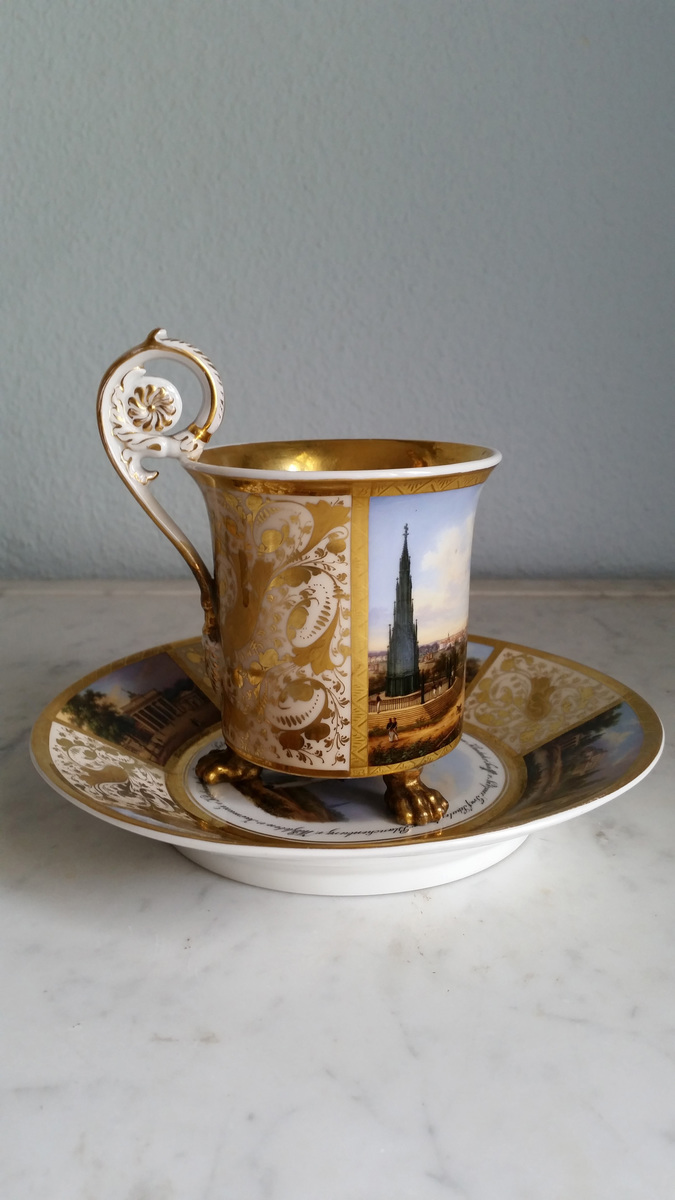Source

Source: Deutsches Historisches Museum, Inv.-Nr. KG 2014/7.1
Porcelain as household goods often combined the practical purpose of providing tableware for dining with the desire to display status and taste, but porcelain objects could also sometimes serve a purely exhibitive purpose as collectibles. A taste for souvenir images on porcelain, depicting tourist and civic sites from larger cities or smaller spa towns, had grown into a sub-industry by the early nineteenth century. Such objects might appeal to visitors seeking proof of their travels and presence, or to locals out of civic pride or patriotism. The cup depicted here, somewhat larger and with heavily gilt decorations resting on lion’s paws, is a rather impractical object and was likely intended mainly for display. The finely painted image shows the new National Monument for the Wars of Liberation in Kreuzberg in Berlin (1817–1821) alongside a panoramic view of the Berlin cityscape. In addition to civic pride and interest, the focus on the impressive cast-iron neo-Gothic spire designed by the architect Karl Friedrich Schinkel to commemorate and celebrate the Prussian and Allied victory over Napoleonic France also appealed to patriotic memories of the recent wars and tapped into the market for related goods. A mixed public of men and women, military and civilian, is seen to be admiring the monument, or at least including it in their itinerary for an outing.

Source: Deutsches Historisches Museum, Inv.-Nr. KG 2014/7.1
© Deutsches Historisches Museum, Berlin